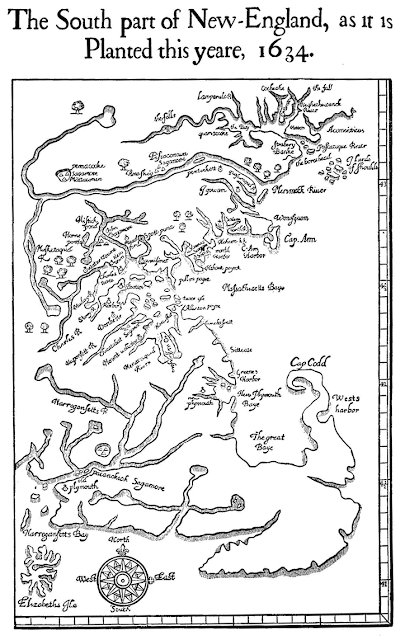 |
| Dock Creek at low tide. |
Ruling out sea serpent, I wondered if, perhaps, a long time ago, some kind of ship had sunk in the creek.
Recently while reading my emails, I came across an announcement from Bridgewater State University's Cape Cod campus. Dr. Calvin Mires, a marine archaeologist, was coming to speak at the South Yarmouth campus about shoreline shipwrecks. Dr. Mires investigates not only shipwrecks, but also wharves, seaside communities, and maritime landscapes.
 |
| Dr. Calvin Mires offers educational and training opportunities to citizen scientists of all ages in Massachusetts. |
 |
| Dock Creek appears under the letters www. |
While I waited for Dr. Mires's response, I stopped by the Wing Fort House on Spring Hill Road, another nice place to walk, and talked to caretaker and archaeologist Dave Wheelock.
"Some Sandwich natives think those rotting pieces of wood could be the remains of the Sandwich glass museum's dock," Wheelock said. So that could be how the creek earned its name, I realized. "But others think the wooden posts could be what's left of some old fishing shacks," he added. Both explanations made sense. Dock Creek is close to the site of the 19th century glass museum, and fishermen frequent the area.
A couple of weeks passed before Dr. Mires responded to my email, and he seemed quite interested in my photos. He wrote that a friend had mentioned Sandwich's cultural resources, and he had already visited Sandwich to search for possible archeaological sites. But he didn't discover Dock Creek. "Your photos provide wonderful information," he wrote. "I have some immediate thoughts, but honestly with so little uncovered it is premature to say. I would enjoy seeing these features in the near future."
We arranged to meet early on a sunny morning when the tide was low.
Dr. Mires clambered over the guard rail that separates the road from the creek and strode through the marsh in worn sandals. He located a couple of raised areas and kicked at the flattened marsh grass. Underneath were piles of old bricks. He looked around, surveying the area. "This must have been a dock for the glass factory," he decided. "They probably loaded shipping crates onto small boats or barges that carried the crates to deeper water where larger ships were waiting. The rotted wood structures were probably posts or pilings that held up the dock."
As we were leaving, he picked up a rotting board with a metal piece attached to it. "I can tell you with certainty the age of this piece," he said. "The metal was made in the late 1800s. It was probably part of an old bridge."
I thanked Dr. Mires for his visit, and we talked about a project he's involved with now at Pilgrim Hall, the reconstruction of the 1626 Sparrow-Hawk shipwreck, discovered Orleans in 1862.

























